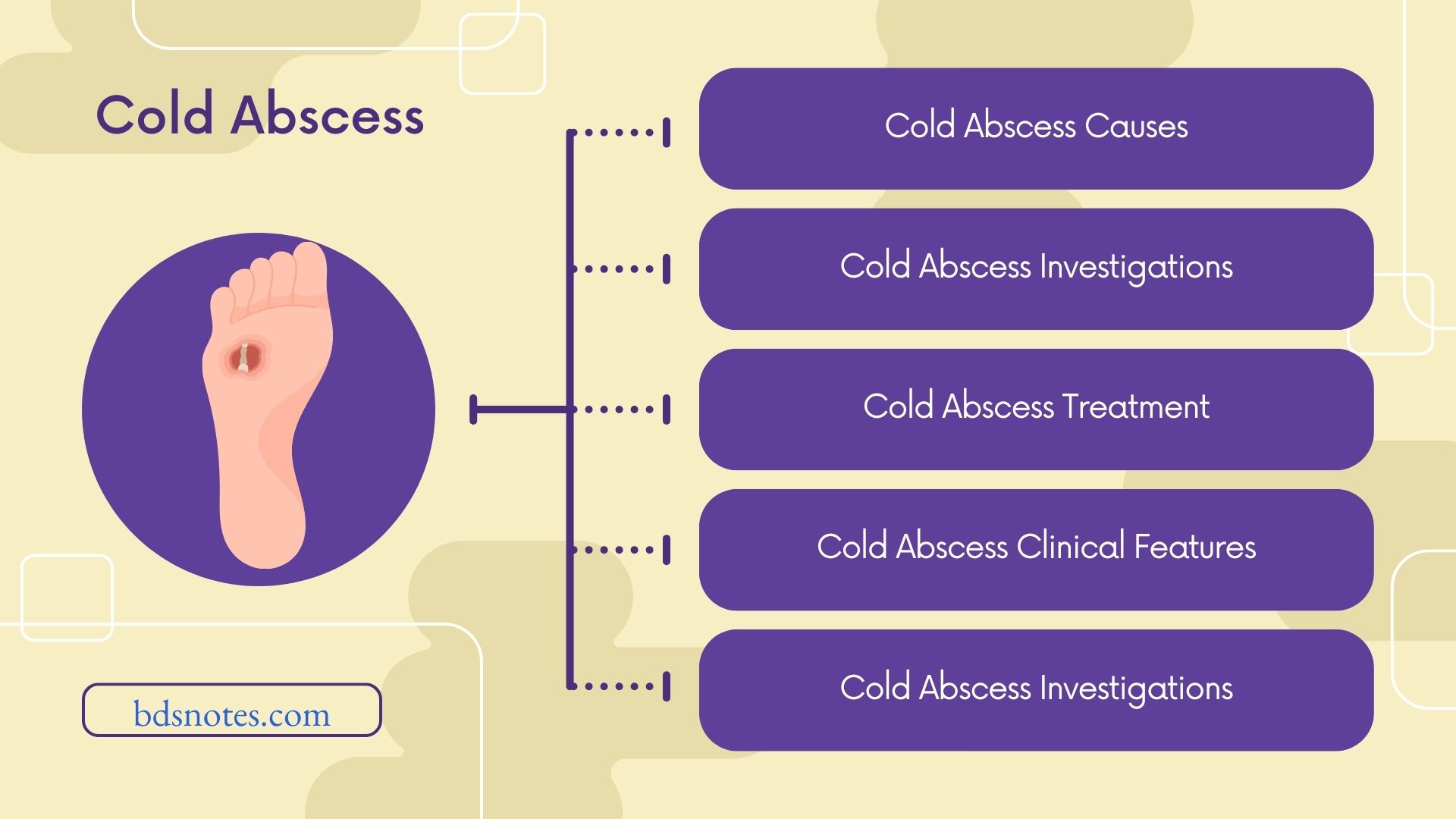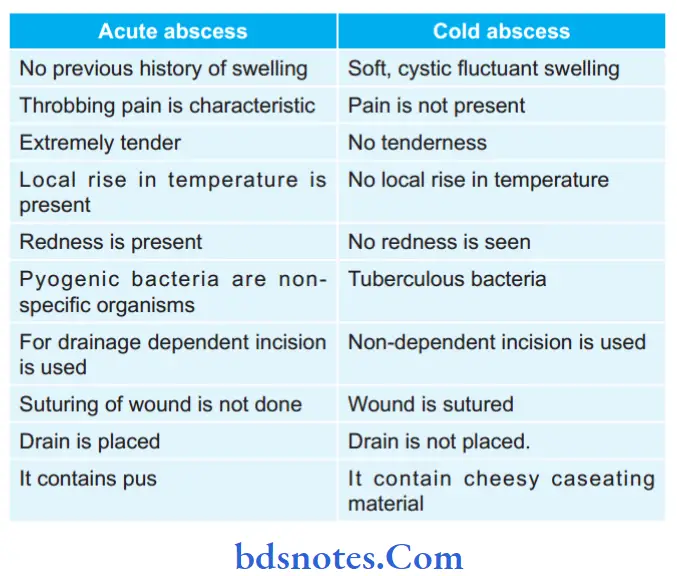Cold Abscess Causes Investigations And Treatment
Question.4. Write short note on Cold Abscess
Or
Write in brief about Cold Abscess
Answer.
Cold Abscess Definition
Cold abscess is also known as Tuberculous Abscess.
Abscess shows no signs of acute inflmmation, that is why it is known as cold abscess
It occurs most commonly in the neck, groin, psoas region,paraspinal area.
Cold Abscess Areas Of Origin or Cold Abscess Causes
- In tuberculous lymphadenitis, cold abscess is commonly seen in anterior triangle of neck.
- In tuberculosis of cervical spine, cold abscess occur in posterior triangle of neck.
Read And Learn More: General Surgery Question And Answers
Cold Abscess Clinical Features
- It is more common in younger age group and is seen at any age.
- There is presence of swelling over the neck which is smooth, soft, flctuant, non-tender, non-transilluminant and have restricting mobility.
- With the change in posture when patient is seated, he support his head with hands and forearm. This is known as Rust’s sign.
- There is also presence of evening fever, loss of weight,appetite and anemia.
- Mattd lymph nodes are present adjacent to cold abscess which are palpable.
- Abscess shows no signs of acute inflammation.

Cold Abscess Investigations
- ESR is raised.
- Mantoux test is positive.
- Presence of anemia and lymphocytosis
- Chest X-ray shows pulmonary tuberculosis
- On FNAC epithelioid cells are seen.
- X-ray of neck in tuberculous cervical spine is done to identify reduced joint space, vertebral destruction and soft tissue shadow.
- MRI of cervical spine, US/CT scan of neck are needed for confiming the anatomical location and number of lesions.
Cold Abscess Sequelae
- Secondary infection occurs in cold abscess, and it become tender.
- Collar stud abscess forms, as pressure increases in cold abscess it provide a way through deep fascia to reach subcutaneous plane and adhere to skin.
- Formation of sinus.
- Disease spread to other lymph nodes and organs.
Cold Abscess Differential Diagnosis
- Branchial cyst and other cystic swellings of neck.
- Secondaries of neck lymph nodes
- Secondaries in cervical spine.
Cold Abscess Treatment
- Anti-tubercular drugs should be started.
- Zig-zag aspiration by wide bore needle in non-dependent aspiration of cold abscess.
- Excision of affcted lymph nodes
- Cervical spine should be immobilized by plaster jacket for 4 months.
- Drainage using non-dependent incision and later closure of wound without placing the drain.
Describe differentiating features of Acute Abscess and Cold Abscess.
Answer.


Leave a Reply